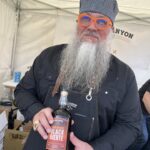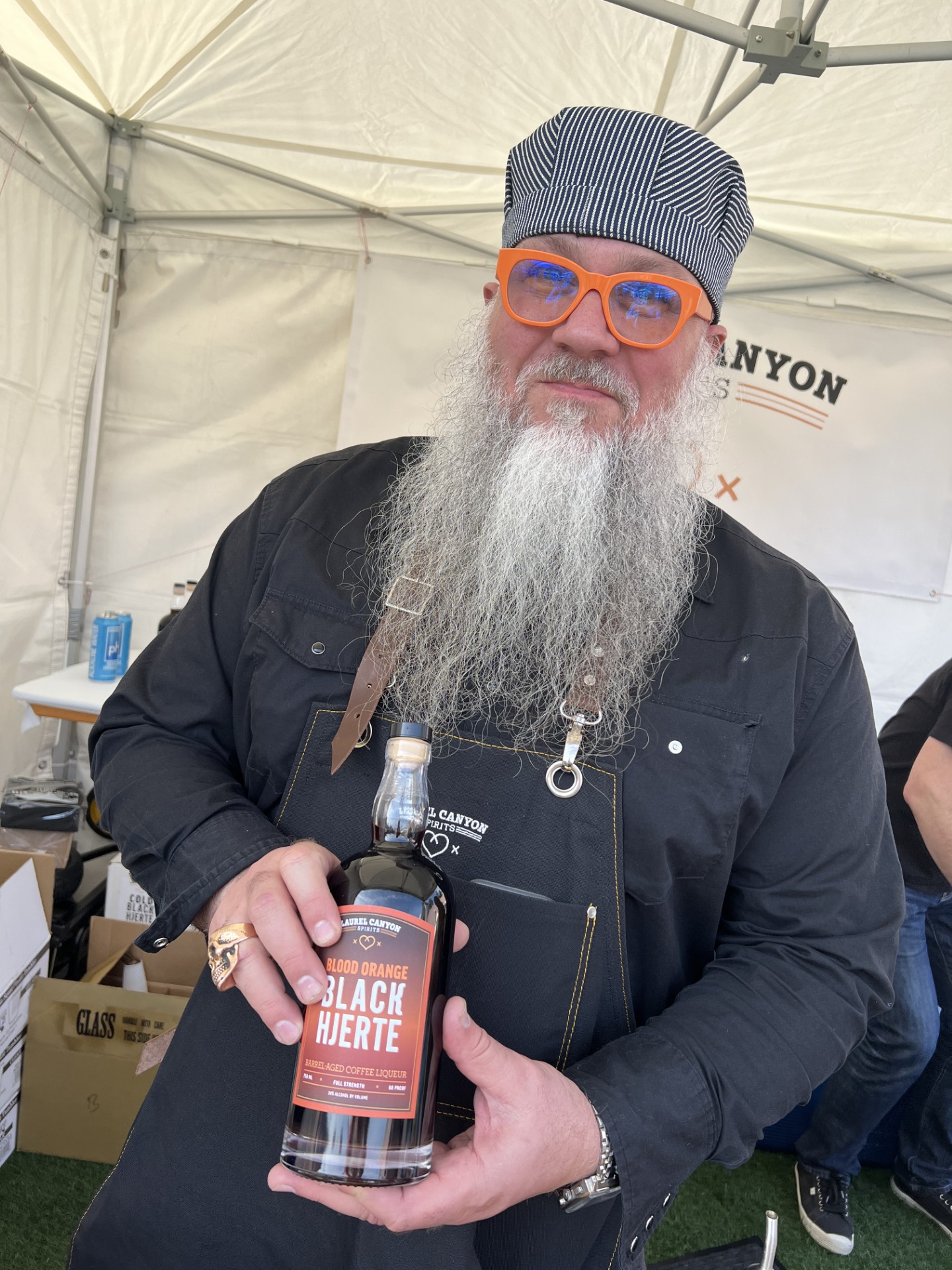Sure, I don’t mind driving down to the Luxe Rodeo Drive Hotel on Rodeo Drive in Beverly Hills (with the hoards of summer tourists) and then up to the penthouse suite to learn about and taste South African wines. I knew it would be worth it, and more. This was the info that came with rsvp:
Hi Eve,
We’d be glad to have you. The masterclass will include 12 top South African wines representing a range of varietals, styles, and regions; I’ll be covering history, trends, terroir – all the stuff a sommelier needs to get a good grasp of South African wine today. I hope you can make it.
Jim Clarke
Marketing Manager, WOSA US

Wines of South Africa Masterclass
With no money coming from the government, the WOSA (Wines of South Africa) groups represents all of South African wines, and representative Jim Clarke covers all of the U.S.
Clarke explained that the Western Cape is the grape growing region, and is fairly compact. The first harvest was in 1659 with grapes brought in by the Dutch. White wines was known to combat scurvy as citrus fruits did, so the Dutch wanted the white wines for their ships. The French Huguenots arrived in 1688.
KWV was founded in 1918, starting as a cooperative not the distributorship they are today; and most wines were offered in the $10 range. (From Wikipedia, “The name “Koöperatieve Wijnbouwers Vereniging van Suid-Afrika” is Afrikaans for “Co-operative Winemakers’ Society of South Africa”)
With Nelson Mandela’s release from prison in 1990, by 1994 the country held their first elections, and could start exporting wine again as the sanctions were dropped. And Clarke said that a “bump in quality” occurred before 2000. Wines are being made in the old world character, and winemakers are now very big on blending.
The sustainability seal (Sustainable Wine South Africa) is being used by 93% of their producers. Any seal found on a wine or estate brandy “has been certified by the Wine and Spirit Board” and “is a guarantee of origin, vintage, and variety as stated on the label.”
Sauvignon Blanc is the second most planted white wine grape varietal and Chenin Blanc is still the first. Pinotage is not as common as people think, with only about 6% of the plantings. Pinotage is a unique varietal to South Africa. It is a cross of Pinot Noir and Cinsault – Cinsault is also referred to as Hermitage, hence the name. The first Pinotage was in 1959 and has proven to be disease resistant and offers a high yield.
From the WOSA, “When the term ‘Wine of Origin’ or the abbreviation ‘W.O.’ together with the name of a production area, such as Stellenbosch, Durbanville or Robertson appears on a label, it confirms that 100% of the grapes from which the wine was made come from that specific area.”
They have a wine school and viticulture school in South Africa; as well as fair-trade and black-owned wineries, and black winemakers due to scholarships now being offered. Clarke said there are lots of efforts being put into those areas now.
Of final note, good wines are available in the $30 to $50 range. The retail prices of the wines we tasted are below.
Tasting
Aromas and flavors separated by “;”
Klein Constantia Perdeblokke Sauvignon Blanc 2012
Fresh crisp and cool, white peach, golden delicious apples, lemon zest; lemon, grapefruit, acidic, long finish. Need shellfish, thinking icy cold shrimp cocktail. (Costantia region.) $24
Downes Family Sanctuary Peak Sauvignon Blanc 2012, some Semillon.
Juicy, herbaceous and floral, peach, apricot, steely; good mouthfeel, acid mid-palate, lemon-lime, softly balanced. (Elgin region.) $20
Simonsig Chenin Blanc 2013
Honeydew melon, cantaloupe, a tiny hint of white pepper, wet pebbles; Nice mouthfeel, sliced apples, acidic, tingly and pleasant. (Stellenbosch region.) $10
Botanica Chenin Blanc 2011
Jasmine, anise, orange peel, stemmy; licorice, lemony, sharp and tangy, quite pleasant. (W.O. Citrusdal region.) $20
De Westhof Lesca Chardonnay 2013
Lemon-lime, butter, fresh, hint of suede; lemonade, grassy, acidic. (W.O. Robertson) $22
Sadie Family Skerpioen 2012
Tropical fruit cocktail, sweat, anise; Lime, peach, concrete, acidic finish. (W.O. Swartland region, Chenin Blanc, Palomino.) $55
Painted Wolf Guillermo Pinotage 2010
Leather, sautéed mushrooms, black plum, mint, dark chocolate, rich soil; Dry, dark dusty fruit, green peppercorn, lingering black licorice. (W.O. Swartland region) $18
Jardin Cabernet Sauvignon 2009
Blueberry, blackberry, black pepper, milk to dark chocolate, dried wood; Black cherry, spice and pepper in good balance, nice finish, well done. (W.O. Stellenbosch) $20
Vilafonte Series C 2011
Plum, pluot, mint, bark; dusty black fruit, smoke, cigar. (W.O. Paarl. Cabernet Sauvignon blend.) $60
Mullineux Syrah 2012
Stewed dark fruit, Mexican chocolate, cinnamon, white pepper; dark dry and tannic, pungent, long finish. (W.O. Swartland) $30
Keermont, 100 Syrah, 2011
Blue to black fruit, smooth, pepper blend; Great spice, juicy dark fruits, smoke. Well done. (W.O. Stellenbosch) $45 approximately.
Klein, 100% Muscat, 2008, late harvest, no botrytis.
“Natural Sweet Wine.” Honeysuckle, rose petals, pear liqueur, gentle, compelling; lovely viscosity, honey and acid play off each other. (W.O. Constantia)
$65.









